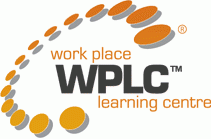Learning maps aid learning and build learner confidence
The most important step in any journey is the first, but if you are going to start a journey with confidence then it helps to have a map that shows the most effective route, the hazards you may encounter on the way and where you will be able to take a break.
For this reason maps have become both a useful tool in the learning process and an apt metaphor for describing the process.
Part of the reason for this is that the learning map creates a level playing field for learners, removing some of the competitive elements in the learning process and allowing each learner regardless of their learning style to create their own route to the collective outcome.
Candice Shoemaker a professor of horticultural science at Kansas State University has been using learning maps on the foundation course for horticultural science students at the university for four years, and been reviewing its impact on student performance.
The class has between 80 and 100 students each semester, all of whom have to study a wide range of subjects in quite a lot of detail.
Like people participating in a work place learning activity or training course the past educational experience of the students although keen to learn, impacted the way in which they participated in the class.
Ms Shoemaker adopted a self efficacy approach that aims to increase confidence amongst students and help them find their own way of understanding quite complex issues
The Learning Map describes all the topics that must be learnt to achieve the required knowledge standard, but also identifies those areas that are essential learning. These form the backbone of the learning. In a work place learning situation the learning map also helps to link learning activities to business objectives
The learner experience is enhanced because they know where they are, can see where they need to get to and what they must do to complete the journey successfully.
Each stage of the journey has to be defined as an outcome with key learning points for which learning activities can then be undertaken. These may include reading, watching a DVD programme or clip, group or individual activities, experiments or tests.
The pace at which the learner builds their knowledge level is determined by the level of work they put in, not just the number of classes they attend.
Individual progress is assessed at the end of each module by the use of straight-forward assessment tests.
Rather than waiting to the end of course exam, which is seldom used within work place learning activities the students were able to assess their own learning through participation in these tests. Their confidence and appetite for learning increased in line with the test results that showed that their knowledge was also increasing.
The findings from this academic situation provide valuable lessons for work place learning professionals.
- It is important to involve learners from the start in the planning of their learning
- Learning activities must always be reviewed or assessed
Members of the Work Place Learning Centre team are available to provide journalists and media organisations with expert comment on all aspects of learning at work.
View our editorial policy click here.
